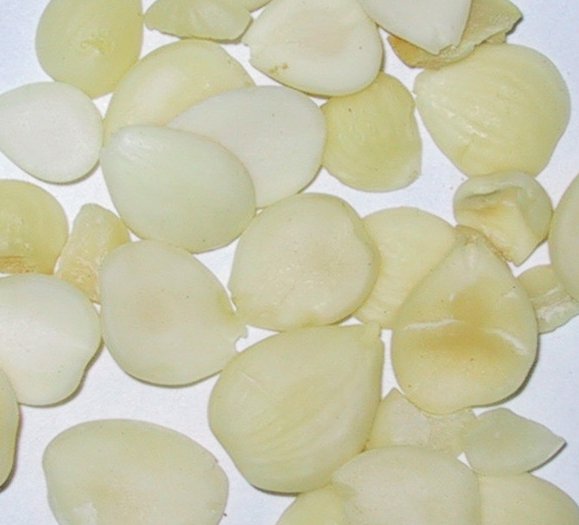Chinese Almond - Prunus armeniaca

The Chinese almond (Xing Ren in Mandarin and Hung Yan in Cantonese) is an important fruit in many countries, but it is only in northern China that it is cultivated specifically for its kernels. The tree of this particular variety grows very erect and is quite distinguishable from all other varieties of apricots. There are several varieties of apricots that produce these seeds, but the best ones are small red fruits with large, medium soft stones, and sweet kernels. The kernel is virtually indistinguishable from the common almond, but the shell is quite different, being darker and having a thickened rim along the suture line which joins the halves. Apricots are native to China and the Chinese prefer the strong flavour to the gentle flavour of true almonds. The Chinese almond appears in many traditional recipes, and may be used in the same way as the true almond.
Controversy reigns about the use of apricot kernels, as eating them raw in anything but small quantities can be toxic. However, hydrocyanic acid, the toxic substance that forms when they are eaten raw, is destroyed by heat. For this reason, the apricot kernels sold in Chinese shops have been blanched, but before using they may be boiled, fried or roasted in a low oven. Twenty minutes at 100 degrees C (200 degrees F) is sufficient.
Chinese almonds come in two main varieties: there are "northern" (bitter) and "southern" (sweet) almonds. Both are used by the Chinese for food and medicine. Sweet almonds have a neutral nature, while the bitter are warming and toxic, but both lubricate the intestines and temper coughs. When used in food, a very small amount of "northern" (bitter) almonds is often used in conjunction with the "southern" (sweet) almonds to bring out the distinct almond flavour.